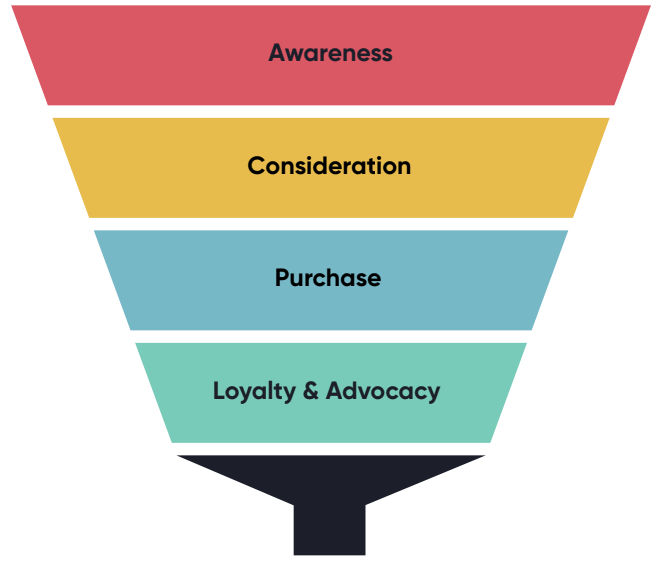
Insights 9 steps on how to turn an MQL into a valuable SQL


I’m going to start off by apologising in advance for the marketing jargon and acronyms - I can’t stand them either so will do my best to ditch ‘em where possible! But indulge me for a minute please?
Quite often the marketing function is seen as identifying and generating Marketing Qualified Leads (MQLs). But at some point in the process, you need to turn these prospects into Sales Qualified Leads (SQLs) and eventually into loyal customers. So how and when does this ‘handover’ happen? In this short guide, I'll break down the process in simple terms, helping you navigate the journey from MQL to SQL with ease. But first things first…
Understanding the basics
Let's quickly clarify what MQLs and SQLs actually are.
MQLs are leads that your marketing efforts have identified as potentially interested in your product or service. You might have marketed to a large group of people, but an MQL is a smaller group of people within that, that have started to engage with your efforts, perhaps by signing up for your newsletters, reading content on your website, downloading a white paper, engaging with your social media posts or more. Now your target audience is smaller, but better quality and deemed more likely to become a customer.
SQLs are those leads that your sales team has determined to have a higher likelihood of converting into a customer, and, more importantly, are ready to ‘talk’ or purchase. They will have expressed enough interest in your brand through your marketing activity and have been deemed by the marketing team as ready to pass on to sales.
The most crucial difference between the two groups here is their intent to buy. Here’s a really quick example of a scenario IRL:
Your brand sells waterproof running trainers.
Fred is online Googling ‘what kit do I need for running in the rain’ and your brand shows up amongst many others. He’s considered to be at the very top of the funnel in the research and awareness phase, so is likely to be considered an unqualified marketing lead here.
Fred then reads an article on your website about ‘how to choose the right trainers for your running style’. He likes what he reads and starts to follow you on social media too, liking the occasional posts. He is now likely to be considered a MQL.
Fred’s Google searches are now becoming more refined too, with his latest showing ‘which are the best waterproof running trainers’. He’s since been on your website again and reviewed your top selling trainers. We’d now consider him to be an SQL. This is because his intent to buy has progressed from casual grazing to ‘I’m ready to purchase’.
This process works in the same way whether you’re B2B or B2C, or selling products or services (more acronyms sorry). So now we’ve got the basics out the way, let’s take a look at how we qualify these leads and move them through the funnel to a fully fledged customer.
1. The bridge: Aligning marketing and sales
Before diving into the details, it's crucial to ensure a seamless connection between your marketing and sales teams. Effective communication and collaboration are key. Regular meetings, shared goals, reporting, and a mutual understanding of the ideal customer profile will set the stage for a successful lead conversion journey.
2. Know Your MQLs inside out
Before you start waving your magic wand, it's crucial to get to know your MQLs on a personal level. Who are they? What are their pain points? What made them engage with your campaign in the first place? The more you understand them, the better equipped you'll be to guide them down the conversion path.
3. Getting the word out content piece after content piece
Once you've identified your MQLs, it's time to woo them. Provide valuable content that addresses these pain points and concerns. And don’t forget to speak to their needs and desires too - not everyone has a problem to be solved! Email campaigns, webinars, blog posts and educational materials can be powerful tools to keep your brand at the forefront of their minds. The goal is to build trust and credibility, paving the way for a smoother transition to the next stage. Just remember, quality over quantity.
4. The power of nurturing: Engaging MQLs
Lead nurturing is like tending to a beautiful garden. You can't just plant seeds and expect Kew Gardens overnight. Send personalised, helpful content that guides MQLs through their buyer's journey. Share success stories, answer their questions, and provide value every step of the way.
5. Timing is everything
Don't pounce on your MQLs the moment they sign up to something. Give them room to breathe, explore your content, and build trust. But, don't wait too long either! There's a sweet spot for follow-ups – it's a bit like Goldilocks finding the perfect porridge. Not too hot (spammy) and not too cold (neglectful), but just right (timely and relevant).
6. Leveraging marketing automation
Automation tools can be your best friends in the lead nurturing process. Set up automated email campaigns, triggered responses, remarketing campaigns, and personalised content delivery based on lead behaviour. This not only saves time but also ensures a consistent and timely engagement strategy.
7. Lead scoring: Sorting the wheat from the chaff
Not all leads are created equal. This is where lead scoring comes into play. Assigning values often in the form of numerical points can be really helpful to determine whether an MQL is ready to be passed over as an SQL. So give points for various lead behaviours and demographics, such as website visits, email interactions, even job titles if we’re talking B2B here. This scoring system helps prioritise leads and identifies the ones ready to take the plunge into the sales funnel.
8. Sales outreach: Turning interest into action
When a lead has been sufficiently warmed up, it's time for the sales team to step in. Equip them with the necessary information gathered during the lead nurturing phase. Tailor your outreach to the lead's specific needs, demonstrating how your product or service can solve their problems.
9. Don’t forget to analyse and learn!
The conversion process doesn't always end with a successful sale. Implement a feedback loop between marketing and sales to understand what worked and what didn't. Which activities had better results, were certain channels better suited for your audience, did your content resonate? Analyse data, track conversion rates, and continuously refine your approach to improve future lead qualification processes.
To summarise
Turning MQLs into SQLs is a dynamic and iterative process that requires a combination of strategic planning, collaboration, and adaptability. By aligning your marketing and sales efforts, implementing lead scoring, nurturing leads, leveraging automation, and maintaining a feedback loop, you'll be well on your way to transforming potential customers into satisfied clients.
Share insight
Let's talk
- Call us +44 (0) 1256 334567
If you would like to find out more about how we can help you connect strategically, creatively or digitally, then call us or get in touch. We’d love to hear from you.


















